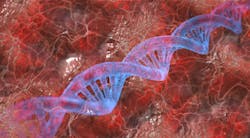Researchers at La Jolla Institute for Immunology (LJI) have shed light on a process in immune cells that may explain why some people develop cardiovascular diseases, according to a news release from the organization.
Their research, published recently in Genome Biology, shows the key role that TET enzymes play in keeping immune cells on a healthy track as they mature. The scientists found that other enzymes do play a role in this process — but TET enzymes do the heavy lifting.
“If we can figure out what’s going on with these enzymes, that could be important for controlling cardiovascular disease,” says Atsushi Onodera, PhD, Postdoctoral Researcher at LJI.
TET enzymes control gene expression by triggering a process called demethylation, where a molecule called a methyl group is removed from where it sits in the genetic code. Demethylation is important because it alters how a cell “reads” DNA.
For the study, the researchers investigated how immune cell DNA can be altered by either TET enzymes (a process called passive demethylation) or by a DNA repair enzyme called TDG (active demethylation).
The researchers aimed to uncover which demethylation pathway has a bigger role in determining the gene expression of immune cells.
The researchers started with two immune cell models: CD4 “helper” T cells and monocytes. Both cell types must proliferate and mature into more specific cell types to help fight off pathogens. However, once monocytes are differentiated into macrophages and stimulated with a molecule called LPS, they stop proliferating. By taking a close look at these CD4 helper T cells and macrophages the researchers could better understand proliferating and non-proliferating models.
The proliferation process is very quick, making it a prime time to witness how demethylation occurs and how it affects gene expression. Onodera used CD4 helper T cells to analyze the demethylation process using a cutting-edge computational analysis program developed for this study. This tool gives scientists an unprecedented look at which regions of DNA within a cell are methylated.
Using a new technique called pyridine borane sequencing, the researchers showed that “active” demethylation — through TDG — is working in immune cells. Onodera says TDG’s role is minor: it does the job of removing two molecules generated by TET enzyme activity.
This discovery is important because TET mutations can be life-threatening. Previous studies have shown that mutations in the TET2 enzyme disable (or interfere with) some of the normal restraints on healthy monocytes. The monocytes go rogue and mature into inflammatory macrophages. People bearing TET2 mutations in macrophages have a 40 percent increase in their risk of developing cardiovascular disease.

